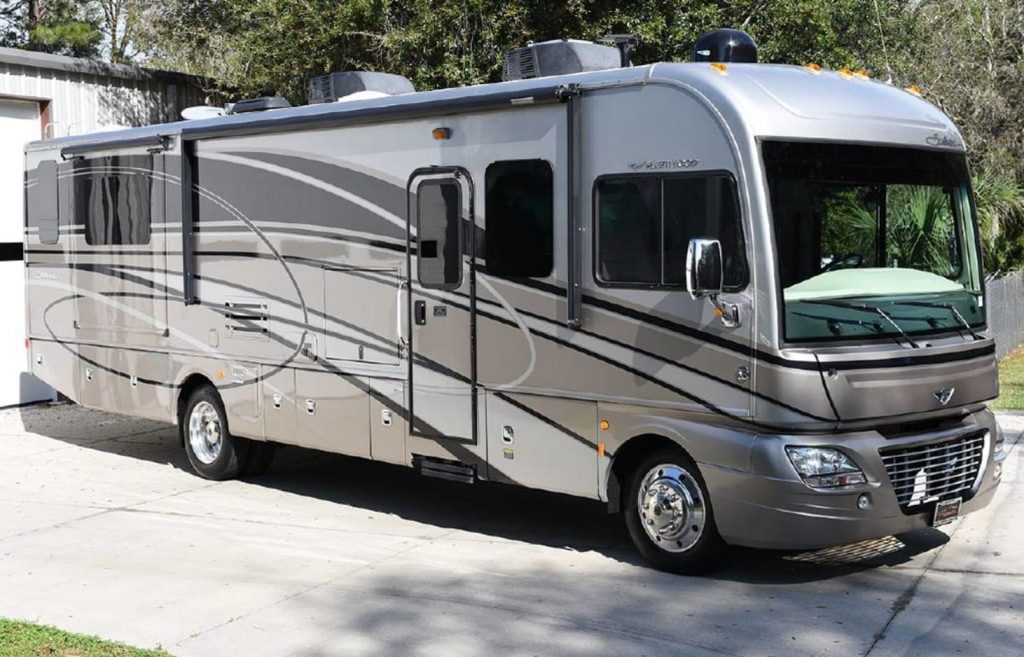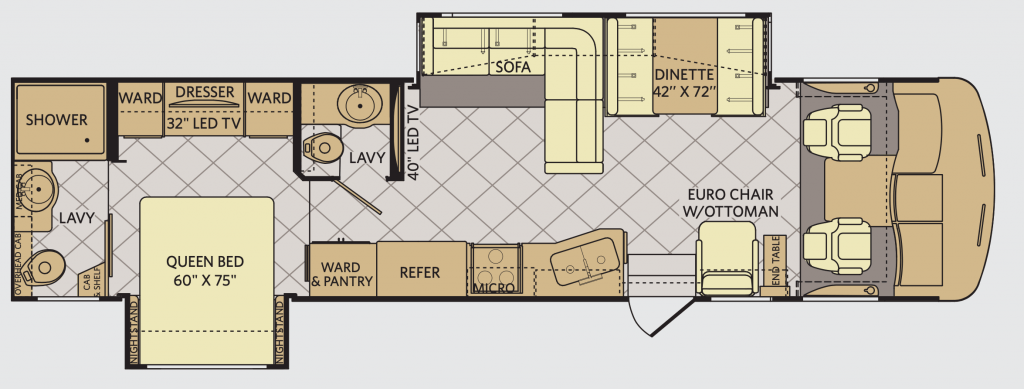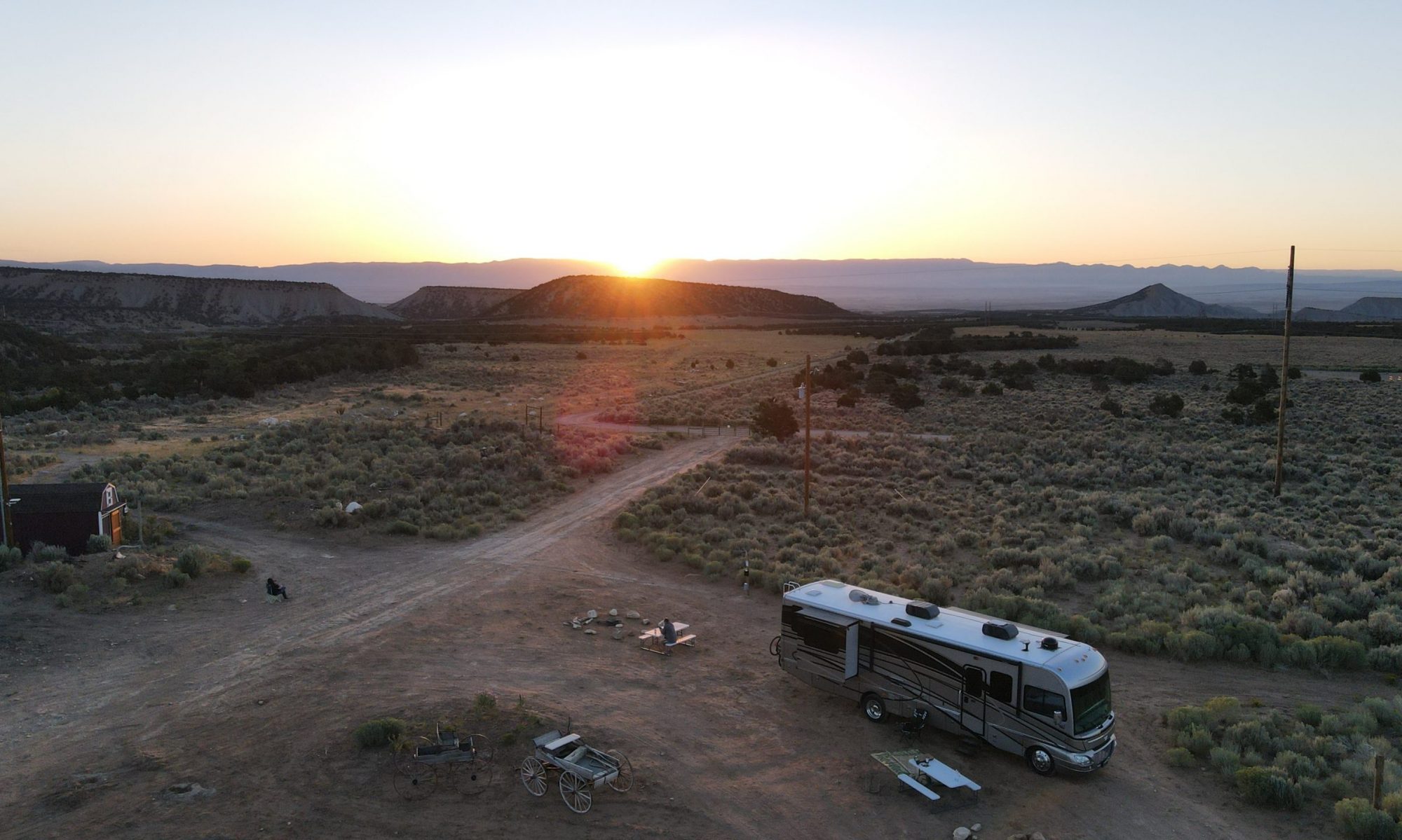This post/article is a piggy back to my article on our two week RV trip out west which you can read about here if you didn’t already. This article will focus on the RV itself, how well it worked for the task at hand, and what I would change if I could do it all over again.

The RV we used was a 2015 Fleetwood Southwind 36L stats here via rvusa.com.
MSRP: $144,549
Fuel Type: Gas
Ford F53 Chassis / Ford Triton V10 (Gas) 362-hp and 457 lb-ft of torque, with fords dependable TorqShift five-speed automatic transmission with overdrive, plus Tow/Haul capability.
140 cubic feet of inside storage (cabinets. cupboards, closets, under-seat/bed, etc.)
118 cubic feet of outside storage. The brochures mention pass-through storage, but I didn’t see that, although there were some full length ‘slots’ in the rearmost and middlemost slots.
The 36L has the following floorplan:

I’ll talk more about what was awesome about this and what was less awesome about this later.
Finding a rental and executing it.
When we were planning for our epic vacation, I talked to numerous folks about what type of RV we should take. Everyone pushed us towards a Class A over a Class C for comfort, a step up in build quality, and most importantly noise level, especially for mountain travel. Apparently, the doghouses (the area between the driver/passenger seat that covers the engine) aren’t as quiet, especially when you’re grinding up a mountain, or holding the engine back in low gear. I’ve driven many vans, so I knew what they were talking about. Ideally, a diesel pusher with the engine and all associated noise in the back is best.
I started my rental search on rvshare.com as well as outdoorsy.com about 2 and a half months before the trip. Kind of last-minute, actually. Both are great owner rental sites. I didn’t want to drive an RV USA billboard across the country and back. I wanted to look and feel like an owner and rent an RV that was *hopefully* cleaner and likely more cared for than a fleet rental RV. More than the vanity that that sounds like, I wanted an RV that the owner knew about and could tell me, it does this well, that well, doesn’t do this well. Over someone who would just hand me the keys. and say, “Good Luck, Have Fun!”.
My initial selection was a diesel pusher in Cincinnati. I think I interviewed the owners more than they interviewed me. We talked about the trip, and our desire/need to be 100% self-sufficient for boon-docking (the act of parking an RV anywhere legal without hookups). He totally got that. We talked about the route, mountain passes, roads, etc. We agreed on the deal, but his RV was in the shop getting a ride enhancement kit, plus he was headed out-west 2 weeks before us, and we’d be cutting it close. Then it happened, when he picked up his RV from the suspension work, other things weren’t working, and he wasn’t comfortable I’d have a trouble-free trip. So I started looking again. (We’ve kept in touch, and I will rent that RV next).
I talked to a number of Class A owners, and asking to take their $100k+ RV across the country and back over two weeks is a big ask. Mileage is what kills the value in RV’s and I’m asking some of these folks who have less than 20k miles on their RV in some cases to let me put 25% of the mileage on the vehicle. I’m paying for that, of course, but If they could rent it to someone for 7 days, that’s simply going to drive it 300 miles (150 miles to a campground, park it for a week, and drive it back), that seems more lucrative and simply a better rental strategy.
Surprisingly, most folks weren’t really all that concerned with our ability to drive one. While I’ve driven some big things in my life, including a 40-foot UHaul, and a box truck back in the day, I had no REAL RV experience, and I was clearly jumping into the deep end. It looks very intimidating, mostly because you’re driving something that potentially costs more than our house to replace, but at the end of the day, it just wasn’t that bad (more on that later).
Renting from rvshare/outdoorsy…
Continue reading “16 Days and 14 Nights in a Class A RV”